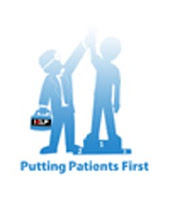What is osteoarthritis?
Osteoarthritis is a painful problem with the joints. Healthy joints help your body move, bend, and twist. Knees glide up and down stairs without creaking or crunching. Hips move you along on a walk without a complaint. But when you have arthritis, such simple, everyday movements can hurt. Using the stairs can be painful. Walking a few steps, opening a door, and even combing your hair can be hard.
Arthritis is mainly a disease of the spine, hip, hand, knee, and foot . But it can happen in other joints too. A joint is where two bones connect. And you have them all over your body.
Arthritis is most common in older people. Even though you can't cure arthritis, there are many treatments that can help with your pain and make it easier for you to move. And you can do things to keep the damage from getting worse.
What causes osteoarthritis?
The simplest way to describe arthritis is that it's wear and tear on the cartilage of your joints. This cushioning tissue is firm, thick, and slippery. It covers and protects the ends of bones where they meet to form a joint.
With arthritis, there are changes in the cartilage that cause it to break down. When it breaks down, the bones rub together and cause damage and pain. Experts don't know why this breakdown in cartilage happens. But aging, joint injury, being overweight, and genetics may be a part of the reason.
What are the symptoms?
- Pain
- Stiffness
- Muscle weakness
- Reduced range of motion and loss of use of the joint
- Cracking and creaking
How is osteoarthritis diagnosed?
Your doctor will check that your pain is not caused by another problem. He or she will ask questions about your symptoms, such as:
- Is the pain burning, aching, or sharp?
- Are your joints stiff in the morning? If yes, how long does the stiffness last?
- Do you have any joint swelling?
If your joints are tender and swollen and the muscles are weak, this will also help your doctor confirm whether you have arthritis. You may also have X-rays to check your joints for damage. Your doctor may want to do blood tests or other tests to see if there are other causes for your pain.
How is it treated?
There are many treatments for arthritis, but what works for someone else may not help you. Work with your doctor to find what is best for you. Often a mix of things helps the most.
Your treatment may include:
- Using pain medicine
- Using heat or ice on the painful joint
- Losing weight, if you're overweight
- Exercising to strengthen your muscles
- Having surgery



No comments:
Post a Comment